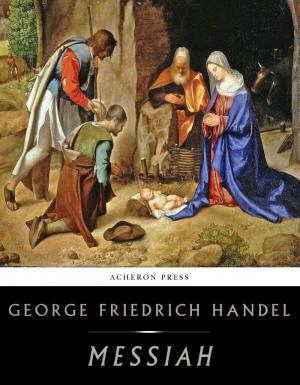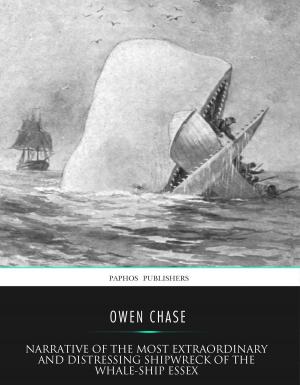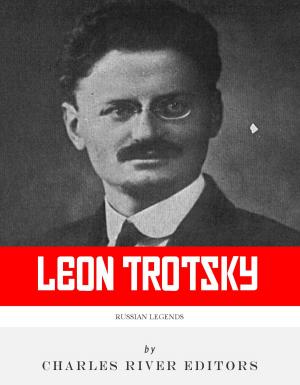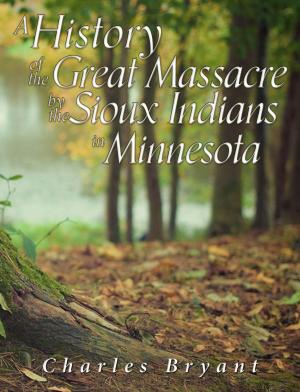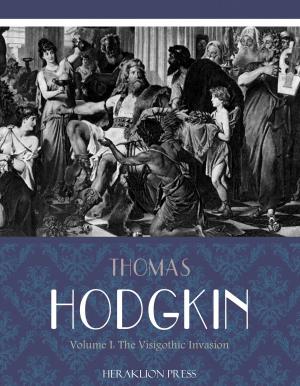The Scourge of God: The Lives and Legacies of Attila the Hun and Genghis Khan
Nonfiction, History, Civilization, Medieval, Biography & Memoir, Historical| Author: | Charles River Editors | ISBN: | 9781475321463 |
| Publisher: | Charles River Editors | Publication: | January 28, 2013 |
| Imprint: | Language: | English |
| Author: | Charles River Editors |
| ISBN: | 9781475321463 |
| Publisher: | Charles River Editors |
| Publication: | January 28, 2013 |
| Imprint: | |
| Language: | English |
*Includes maps of Genghis Khan's and Attila's empires and pictures depicting the two men and other important people and places in their lives.*Discusses legends and controversies surrounding the lives, deaths, and legacies of Attila the Hun and Genghis Khan.*Includes a Bibliography of each man for further reading.*Includes a Table of Contents. Attila, Emperor of the Hunnic Empire and thus most commonly known as Attila the Hun, is an idiosyncratic figure who has become more myth than man, not least because much of his life is shrouded in mystery. Perhaps the most famous barbarian in history, Attila was the lord of a vast empire spanning two continents and was often referred to as the Scourge of God, but he is best remembered for what he did not conquer. Though he seemingly had Rome at his mercy in 452, he ultimately decided not to sack the Eternal City, and a year later he had suffered a mysterious death. What is known about Attila came mostly from Priscus, a guest of his court who wrote several books about Attilas life in Greek. Unfortunately, much of that work was lost to history, but not before the ancient writer Jordanes relied on it to write his own overexaggerated account of Attilas life. And like their leader, the Huns themselves are an instantly recognizable name with mysterious origins; most of what is known about the Huns came from Chinese sources thousands of miles and an entire continent away from Italy. Naturally, the dearth of information and the passage of time have allowed myths and legends to fill in the most important details of Attilas life. Why did a man at war with the Roman Empire for so long decide not to sack Rome in 452? Did a meeting with Pope Leo the Great convince him to spare the capital of the Western half of the empire? Did a vision from St. Peter induce Attila to convert to Christianity? Was Attila murdered by his new bride? Many authors and chroniclers have provided many answers to the many questions, but the lack of answers has allowed Attila to become the face of ancient barbarity and the embodiment of the furious nomadic conqueror. In a world fascinated by men like Alexander the Great and Julius Caesar, Genghis Khan is one of historys greatest and most famous conquerors. No man, before or since, has ever started with so little and gone on to achieve so much. From a noble family but raised in poverty that drove him to the brink of starvation, Genghis Khan rose to control the second-largest empire the world has ever known (the largest being, arguably, the British Empire of the 18th and 19th centuries), and easily the largest empire conquered by a single man. And while many empires disintegrate upon the death of an emperor, like Attilas, Genghis Khans empire endured and was actually enlarged by his successors, who went on to establish dynasties that in some cases lasted for centuries.Though history is usually written by the victors, the lack of a particularly strong writing tradition from the Mongols ensured that history was largely written by those who Genghis Khan vanquished. Because of this, Genghis Khans portrayal in the West and the Middle East has been extraordinarily (and in many ways unfairly) negative for centuries, at least until recent revisions to the historical record. He was far more complex than the mere brute that his negative portrayals indicate. The Scourge of God discusses the facts, myths, and legends surrounding the lives, deaths and conquests of Attila and Genghis Khan, examining the historical record and the way in which their legacies were shaped, all in an attempt to separate fact from fiction. Along with pictures and bibliographies, you will learn about Attila and Genghis like never before.
*Includes maps of Genghis Khan's and Attila's empires and pictures depicting the two men and other important people and places in their lives.*Discusses legends and controversies surrounding the lives, deaths, and legacies of Attila the Hun and Genghis Khan.*Includes a Bibliography of each man for further reading.*Includes a Table of Contents. Attila, Emperor of the Hunnic Empire and thus most commonly known as Attila the Hun, is an idiosyncratic figure who has become more myth than man, not least because much of his life is shrouded in mystery. Perhaps the most famous barbarian in history, Attila was the lord of a vast empire spanning two continents and was often referred to as the Scourge of God, but he is best remembered for what he did not conquer. Though he seemingly had Rome at his mercy in 452, he ultimately decided not to sack the Eternal City, and a year later he had suffered a mysterious death. What is known about Attila came mostly from Priscus, a guest of his court who wrote several books about Attilas life in Greek. Unfortunately, much of that work was lost to history, but not before the ancient writer Jordanes relied on it to write his own overexaggerated account of Attilas life. And like their leader, the Huns themselves are an instantly recognizable name with mysterious origins; most of what is known about the Huns came from Chinese sources thousands of miles and an entire continent away from Italy. Naturally, the dearth of information and the passage of time have allowed myths and legends to fill in the most important details of Attilas life. Why did a man at war with the Roman Empire for so long decide not to sack Rome in 452? Did a meeting with Pope Leo the Great convince him to spare the capital of the Western half of the empire? Did a vision from St. Peter induce Attila to convert to Christianity? Was Attila murdered by his new bride? Many authors and chroniclers have provided many answers to the many questions, but the lack of answers has allowed Attila to become the face of ancient barbarity and the embodiment of the furious nomadic conqueror. In a world fascinated by men like Alexander the Great and Julius Caesar, Genghis Khan is one of historys greatest and most famous conquerors. No man, before or since, has ever started with so little and gone on to achieve so much. From a noble family but raised in poverty that drove him to the brink of starvation, Genghis Khan rose to control the second-largest empire the world has ever known (the largest being, arguably, the British Empire of the 18th and 19th centuries), and easily the largest empire conquered by a single man. And while many empires disintegrate upon the death of an emperor, like Attilas, Genghis Khans empire endured and was actually enlarged by his successors, who went on to establish dynasties that in some cases lasted for centuries.Though history is usually written by the victors, the lack of a particularly strong writing tradition from the Mongols ensured that history was largely written by those who Genghis Khan vanquished. Because of this, Genghis Khans portrayal in the West and the Middle East has been extraordinarily (and in many ways unfairly) negative for centuries, at least until recent revisions to the historical record. He was far more complex than the mere brute that his negative portrayals indicate. The Scourge of God discusses the facts, myths, and legends surrounding the lives, deaths and conquests of Attila and Genghis Khan, examining the historical record and the way in which their legacies were shaped, all in an attempt to separate fact from fiction. Along with pictures and bibliographies, you will learn about Attila and Genghis like never before.

